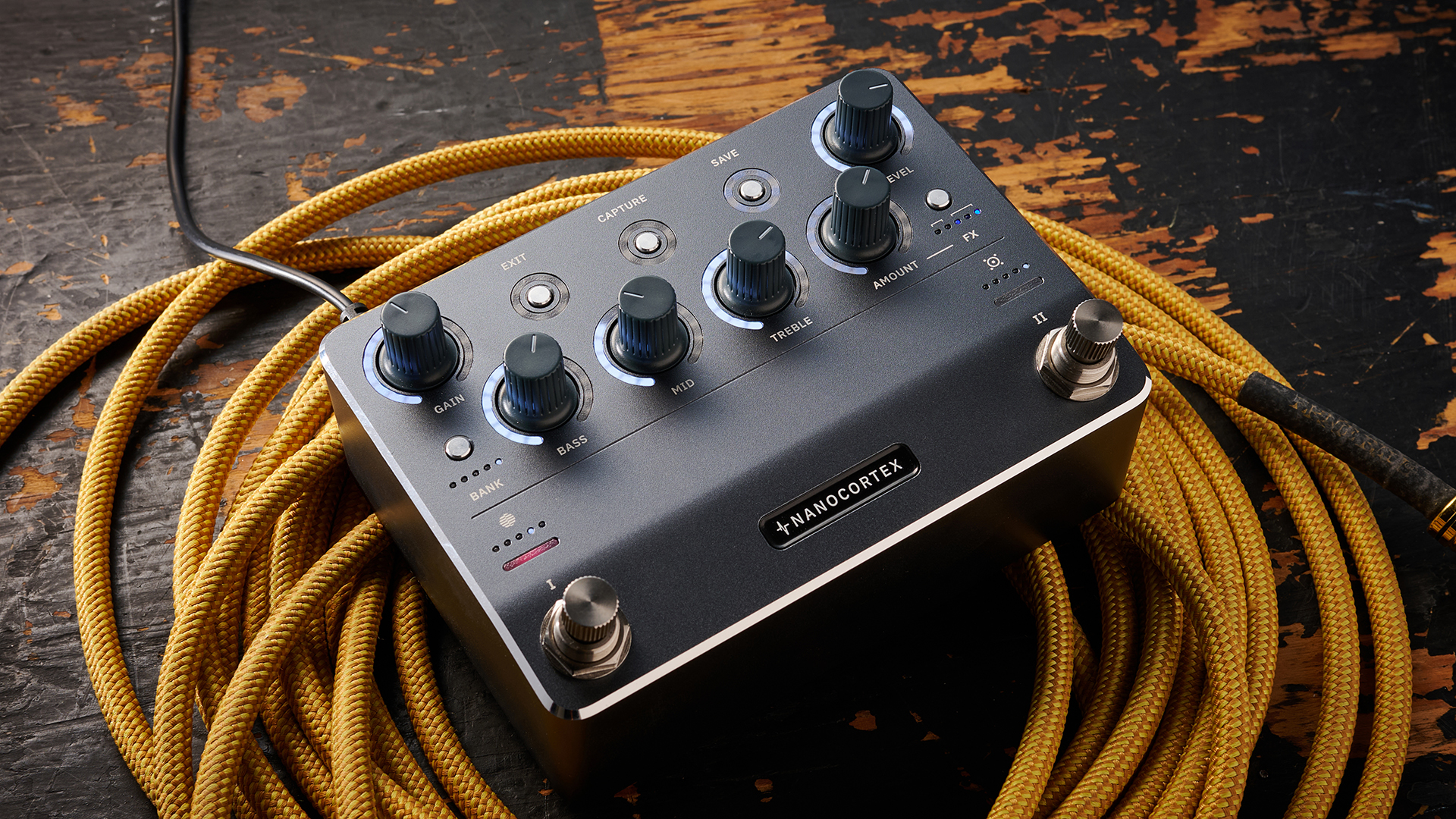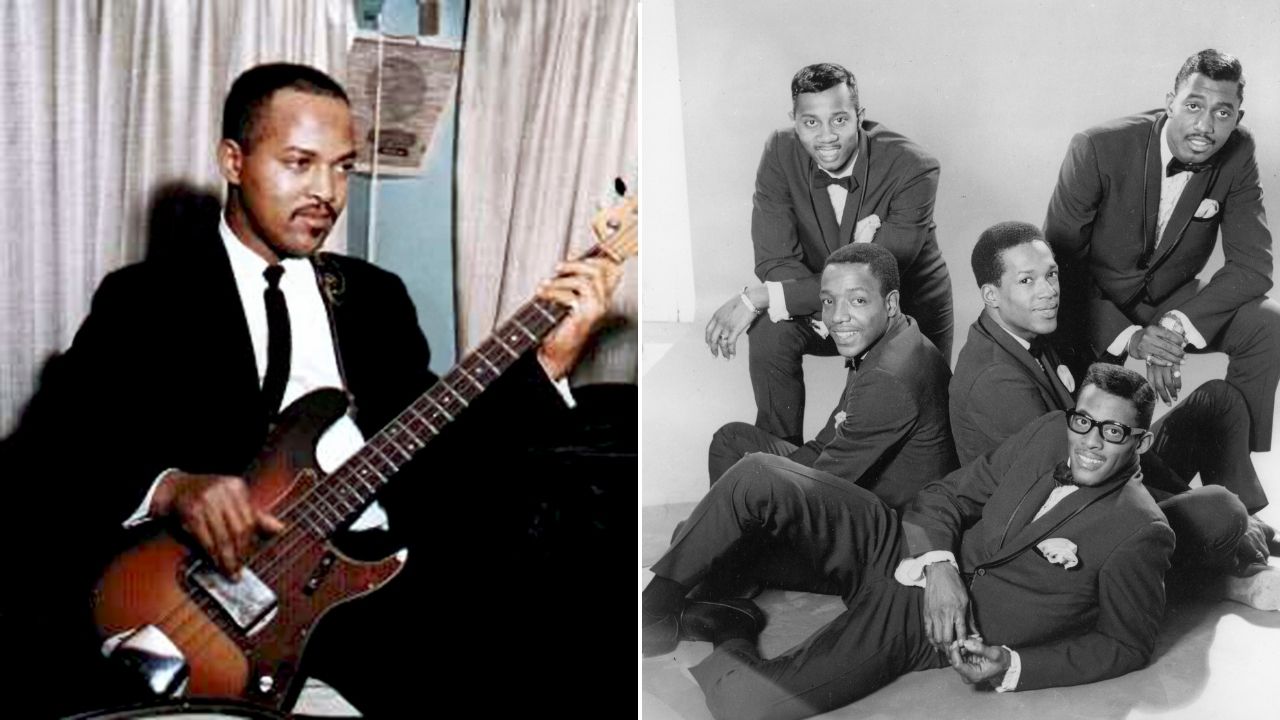Guitar World Verdict
The Nano Cortex might not be perfect, but with the help of a breezy app, an expansive new update, and some world-class features, it very nearly is. As a compact amp modeler/cab simulator/Capture device, this is perhaps the best option out there, screen or no screen.
Pros
- +
Outstanding Capture tones
- +
Excellent companion app
- +
Onboard effects are fantastic – and there's plenty to choose from
- +
Performs exceptionally as a pedal platform
- +
Tiny, and super light
- +
Can be powered via USB-C
Cons
- -
No screen
- -
No XLR out or stereo input
You can trust Guitar World
When Neural DSP unveiled the Quad Cortex at NAMM 2020, the firm altered the face of the guitar world as we know it today. The ground-breaking piece of precision-engineered technology ushered in the next chapter of Neural DSP’s story, and built on the firm’s hugely popular plugin platform by unleashing an ultra-powerful, fully fledged amp modeling, cab-simulating, multi-effects processing floorboard.
It wasn’t a new concept, but the execution of the idea was something else. The Quad Cortex married consumer tech aesthetics and functionality with top-tier tones, further convincing countless players the world over to completely ditch their guitar amps and pedalboards.
To this day, the Quad Cortex is seen as the gold standard for floor-based multi-effects amp-modeling pedals. And, given the mounting competition that Neural DSP’s innovation has invited over the years, that’s no mean feat.
Line 6’s Helix line has been expanded with a number of pedals – the HX Stomp XL, HX One – which are all the recipients of regular firmware updates. Even Fender got in the game with the Tone Master Pro.
However, in late 2024, four years after the launch of the inaugural Quad Cortex, Neural DSP officially launched its successor – or, should we say, its smaller sibling. Enter the Nano Cortex – a teeny, tiny, amp modeler/cab simulator/effects processor/IR loader/Capture device that looks to deliver Quad Cortex tones in the smallest package yet.
First launched in September, the Nano Cortex was retrospectively treated to an all-encompassing, free NanOS 2.0.0 update in May 2025, which not only addressed some of the biggest drawbacks that hampered the original blueprint in the minds of many players, but also went above and beyond to vastly improve its already-rather-impressive functionality.
Indeed, whereas the Nano Cortex first arrived with a fixed signal chain and highly limited effects options, NanOS 2.0.0 introduced a total of 47 new effects and utilities – drives, modulations, wahs, EQs, and fuzz pedals among them – as well as improved control over the chain.
All the latest guitar news, interviews, lessons, reviews, deals and more, direct to your inbox!
So, given the upgrades – many of which came directly from player requests – just how does the Nano Cortex stack up to the competition?
Neural DSP Nano Cortex review: Features
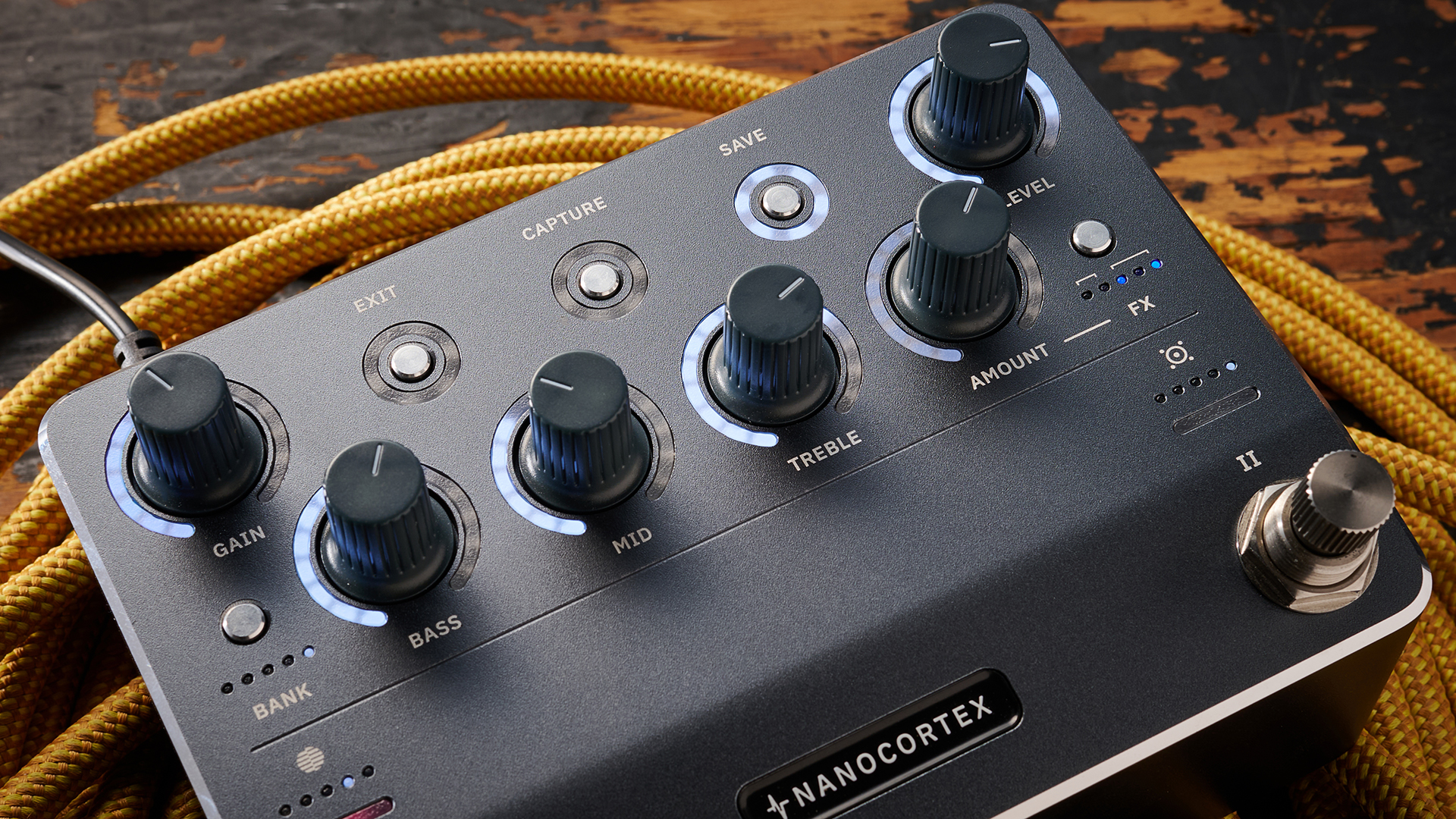
The Nano Cortex continues the precedent set by the Quad Cortex by arriving in a sleek matte gray chassis that wouldn’t look out of place at an Apple tech convention. It’s a very professional-looking bit of kit – sturdy, robust, and aesthetically pleasing – and a worthy companion to the Quad Cortex.
It is sized at 5.6” x 4.0” x 2.4” and weighs in at 1.36lbs, which is absolutely tiny. It's big enough to accommodate a number of parameters, function buttons and your standard I/Os, but it's plenty small enough to fit in your gig bag – or your pocket, if you have larger pockets. There is, however, a pretty notable omission: it hasn’t got a screen.
Instead, it’s just got knobs for Gain, Level, Bass, Mid and Treble, and an Amount control for controlling the five onboard effects. These all have LED rings, which show the parameters' settings for any given preset. There’s also a side-mounted boost switch, ground-lift switch, MIDI jack and a headphone output for silent practice.
In operation, 25 Captures organized into five banks of five are joined by five IR slots, as well as two pre- and three-post effects that can (thanks to the new update) be populated with a range of expansive effects.
The position in which these tools fit into the signal chain has been loosely predetermined by Neural DSP, but that’s no issue: everything makes sense in operation – your overdrive effects can only go in any of the pre-effects slots, your reverbs can only go in the last post-effects slots. You get the picture.
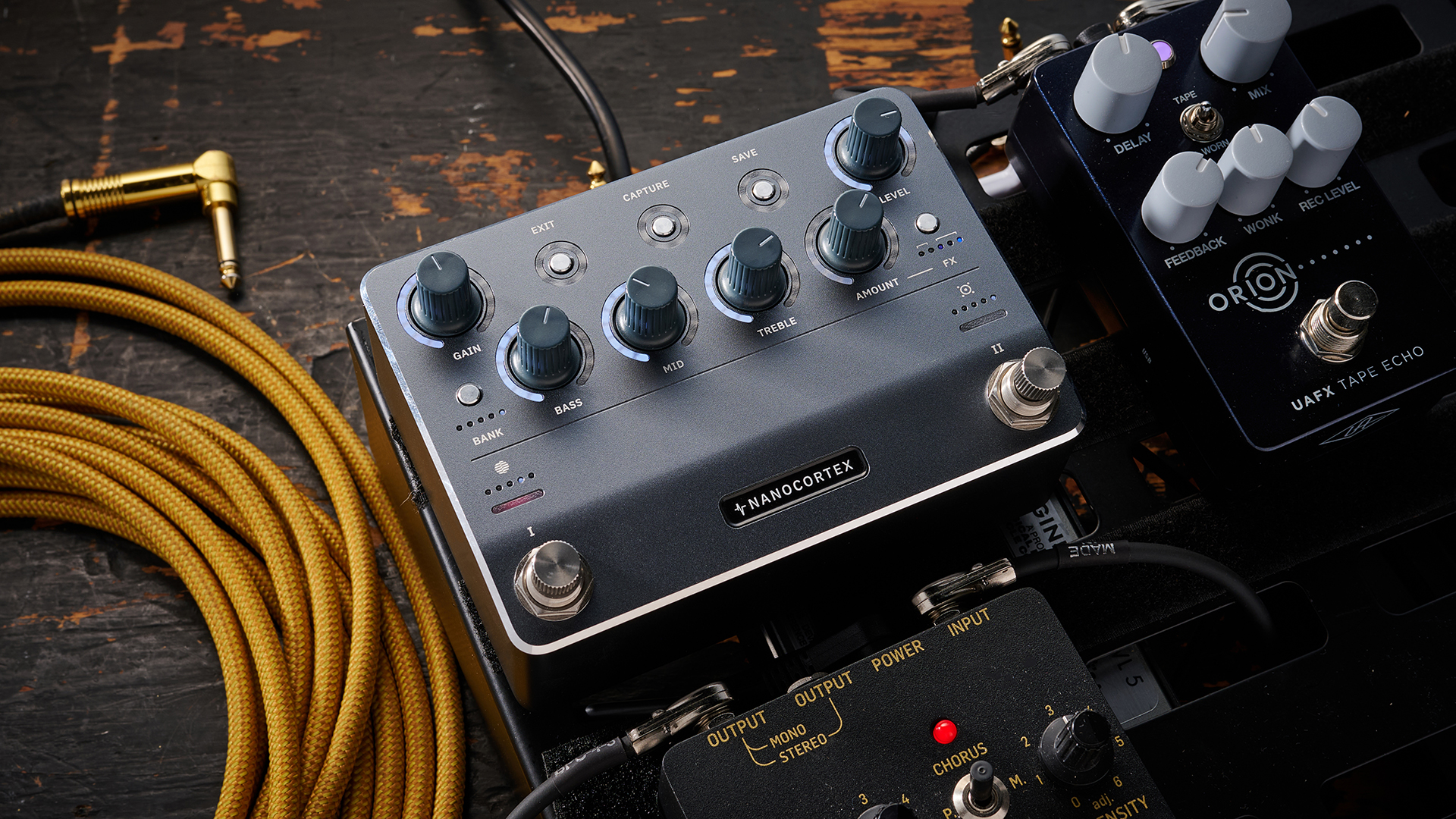
As mentioned, there are 47 effects and utilities which you can use to build around the sole amp capture and IR blocks. Specifically, there are eight compressors, four wahs, two filters, nine guitar overdrives and two bass overdrives. There is also now a plethora of 'verbs, delays and modulations to choose from, from Dual, Digital and Circular Delay, to Ambience, Cave and Mind Hall Reverbs. There is also Neural DSP’s famed Transpose function, an Input Gate and three EQs.
All in all – in terms of tones alone – it makes for a very generous list of effects indeed, and one that greatly expands the sonic potential and usability of such a small piece of kit.
Another big feature is the 'Capture' button, which can be used to create Neural DSP-quality Captures from the comfort of this minuscule pedal. It's a very powerful appointment from such a small pedal, and Neural's Capture process – which can digitally model any amp, cab, drive pedal, or all in one go – is mercifully easy (and hugely popular) so this is bound to be a huge selling point of the Nano.
Because of its size, the pedal has had to get creative with its on-platform operation, which at times can feel a bit clunky, contrary to the usual Neural DSP experience. Captures can be cycled through using the Bank button and the left-hand rotary footswitch.
The right rotary footswitch, meanwhile, cycles through IRs, of which there are five readily available at any given time. Overall, the Nano Cortex can store 256 Captures and 256 Impulse Responses, which can be loaded via the Cortex Cloud app (more on that in a bit).
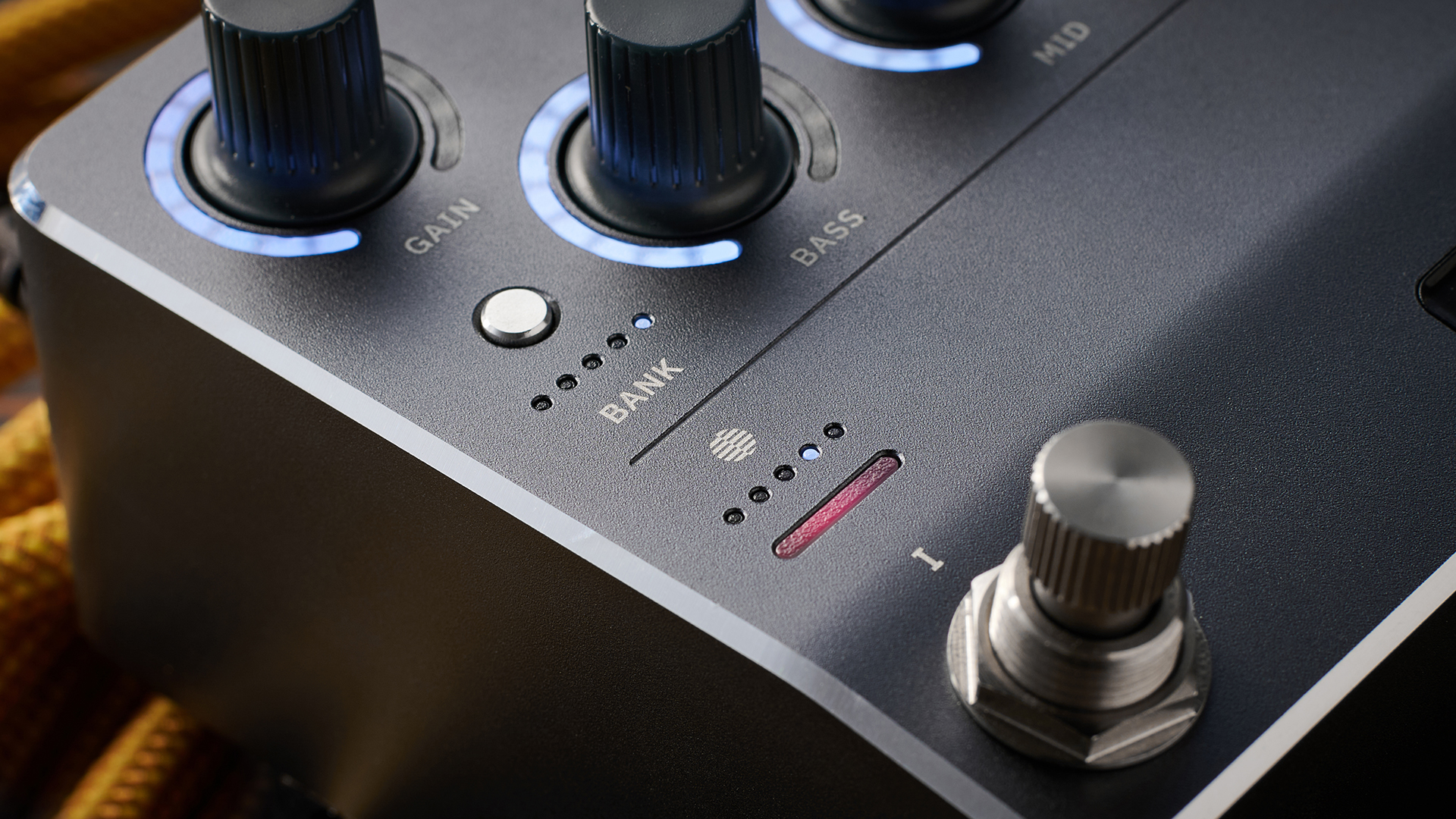
Using the footswitches, four separate recallable presets can be made – IA and IB, and IIA and IIB. In operation, these four banks can be used to make four ‘mini-boards’, which can in turn be used to trigger a quartet of effects combos. This is exactly how I’ve been using the newly updated Nano Cortex at gigs: I think the Chorus 229T is one of the best choruses I’ve heard, so I have dropped my Boss pedal from my pedalboard and attached that effect to one of my Fender Deluxe amp Captures.
Likewise, I add the Green 808 overdrive and the Ambience reverb to two further presets for lead and atmospheric slide tones. A Klon Centaur-style overdrive would have been nice, and there is a slight lag in preset changing, but in context it works very well indeed.
However, to manually navigate and activate/bypass effects manually on the pedal, the Effect button has to be pressed and held. Again, this can be rather clunky, especially when triggering effects on the fly.
The lack of a screen can be jarring at first, and certainly diminishes the usability of the Nano Cortex. The IK Multimedia TONEX – perhaps its closest competitor as a tiny all-in-one rig solution – has a screen (even if it is slightly archaic), while the Line 6 HX Stomp (albeit larger and more expensive) is also more tactile in operation.
Here, a simple strip screen telling you what Capture/IR combo you are playing through at any given moment – especially when one considers the sheer number of IRs and Captures that can be loaded into the pedal’s various banks – would have been nice.
But remember, this is meant to be ‘Nano’ in its design, and potentially the smallest pedal Neural DSP will ever put out. Not only that, but some of its other competitors – like the Kemper Profiler Player – also do away with the screen, so it may not be a genuine dealbreaker in this product category.
Given this remit, the feature set is within reason, and when you realize just how powerful this pedal is – and how good it sounds – these perceived user shortcomings are easily overlooked, especially when you remember what this is trying to be: a tiny, hugely versatile, sweet-sounding modeler that can expand, replace, and even Capture your existing rig.
That, and the Nano Cortex has a piece of partner software that makes the whole thing much easier…
Neural DSP Nano Cortex review: App
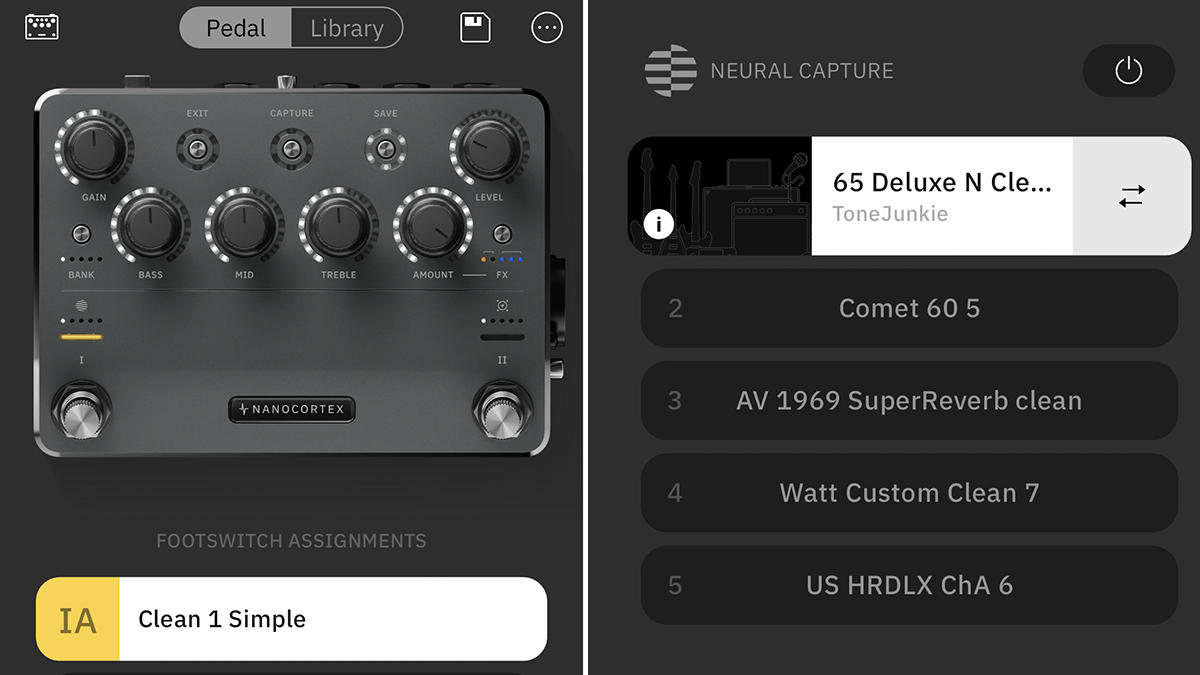
Given its smaller dimensions, the Nano Cortex relies heavily on the free Cortex Cloud app, which has been updated to allow for Bluetooth connectivity between app and pedal. Here, you can browse Neural DSP’s huge library of public Captures – from amp models to drive pedals – which can be easily uploaded to one of the Nano’s Capture slots with a few taps of a screen.
There’s a lot there, and this is a huge plus for the Nano Cortex. You can play Captures of vintage Fenders, boutique Two Rocks, and any number of Marshalls and Vox amps that have been modeled by Neural DSP users. Neural's Capture process is widely regarded as being one of the best modeling technologies out there, and that is clear to see when playing through the endless Captures on offer: the tones are stellar.
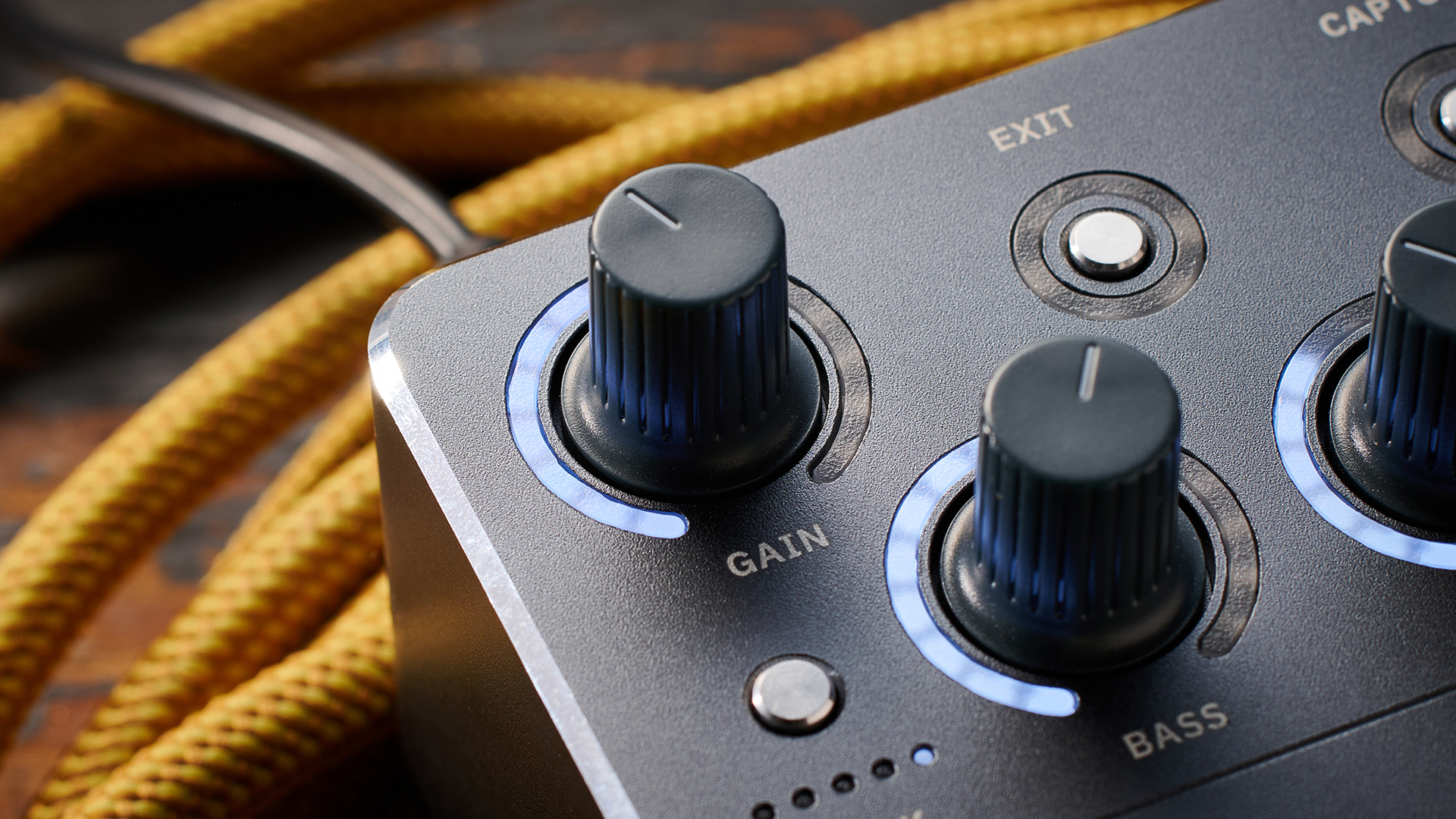
The app can also be used to fine-tune the onboard effects and can aid with cycling through Captures, organizing presets and assembling various guitar tones.
Phone/pedal compatibility is a common thing in the gear world now – just see the Positive Grid range – and while it can be a turn-off for more traditional players, the Cortex Cloud is gratifyingly easy to get around, and vastly improves the Nano experience.
Given the Cortex Cloud is crucial to getting the most out of the Nano Cortex, we’re pleased to see this is the case. It makes the streamlined control set a lot more palatable, and not as restrictive as first thought.
Neural DSP Nano Cortex review: Sounds
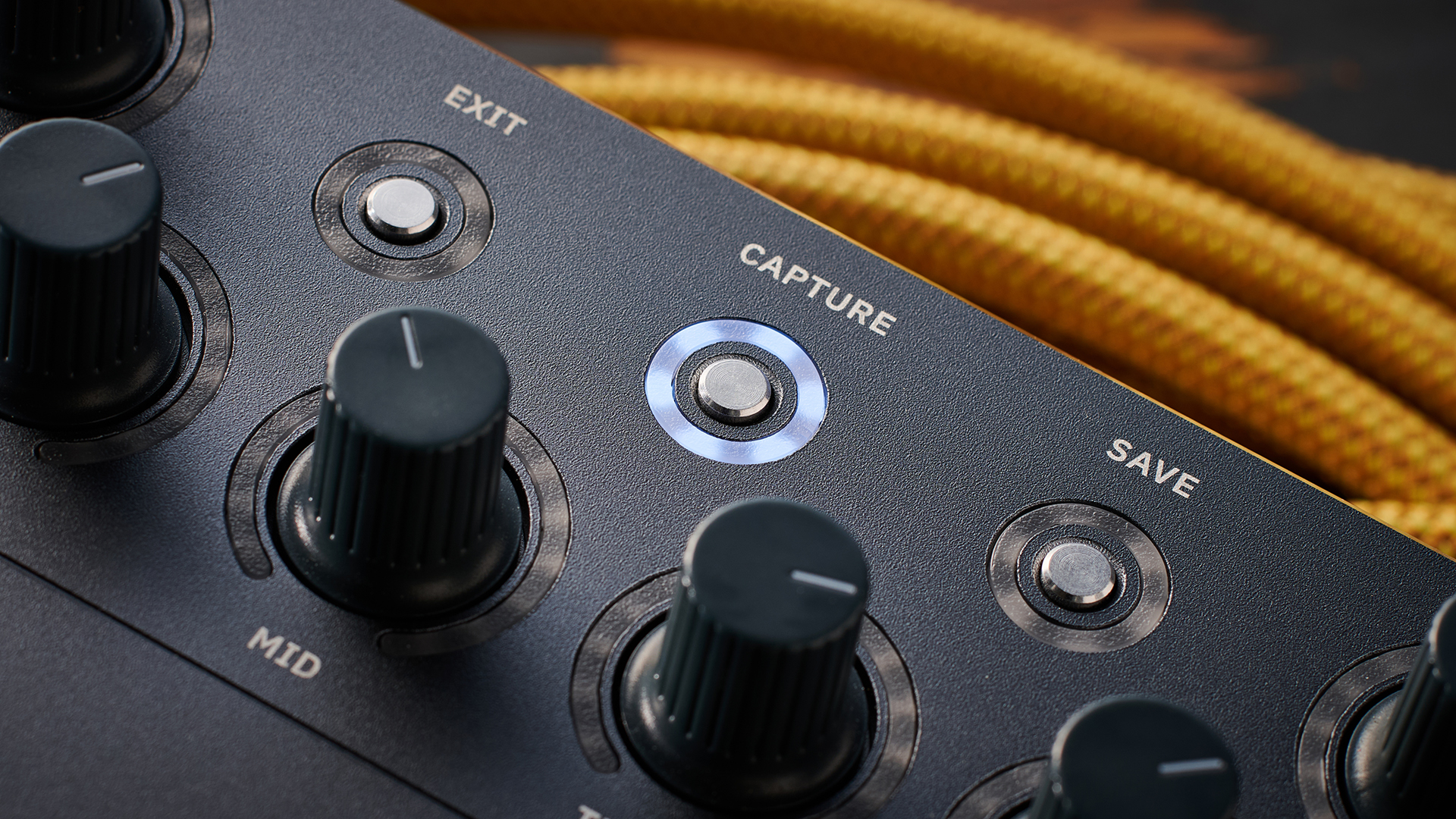
This is the most straightforward part: the sounds are truly exceptional. As a standalone pedal amp running through headphones or direct to a PA, the Nano Cortex excels, and the onboard effects – especially now the pool has been significantly broadened – are borderline impossible to fault.
I’ve already mentioned my fondness of the chorus, but the buck doesn’t stop there. Before the update, I was already highly content with the original bank of effects, and used them extensively after I made the digital switch and ditched my Fender Blue Junior in favor of the Nano Cortex.
However, my experience with using the Nano Cortex live, in rehearsal and even at home has (unsurprisingly) dramatically improved with the expanded utilities list. The Ambience reverb has a touch of BigSky energy about it that is perfect for wishy washy soundscapes, while the VCA Comp has allowed me to free up further space on my ’board by relegating my Xotic SP Compressor.
Elsewhere, the list of drives is fully comprehensive – sans a Klon Capture, of course – and covers all bases that I’d need from a pocket-sized amp modeler. I’m never usually impressed with digital fuzz effects, but Facial Fuzz – a Fuzz Face clone – equally won me over.
Now, the Nano Cortex is all I’d ever need to get me through an hour-long headline set, and while I still use it within the context of a wider rig (more on that in a sec) the pedal itself does an admirable job of jumping between a ton of top-notch tones that cover all my bases.
When paired with a traditional pedalboard, it’s also a fantastic pedal platform that responds well to analog and digital pedals alike. In front of an analog transparent overdrive, the clean amp Captures get an authentic-feeling ‘breakup bump’ that doesn’t feel like an underwhelming digital amp with some cranked fizzy gain.
All of these top-tier tones translate well into DAWs, because the Nano Cortex also functions as a USB audio interface that can – thanks to its tiny dimensions – also be powered as a standalone unit via USB-C.
Of course, it’s a Neural DSP product, so its sonic performance was never in doubt, but to have something so small sound so good – and offer a great way to expand existing rigs – is quite something. Basically, if you liked the sounds of the Quad Cortex, you’re going to like this. Similarly, if the QC was just too big for your liking and simply did too much, the Nano might be for you.
Neural DSP Nano Cortex review: Capture
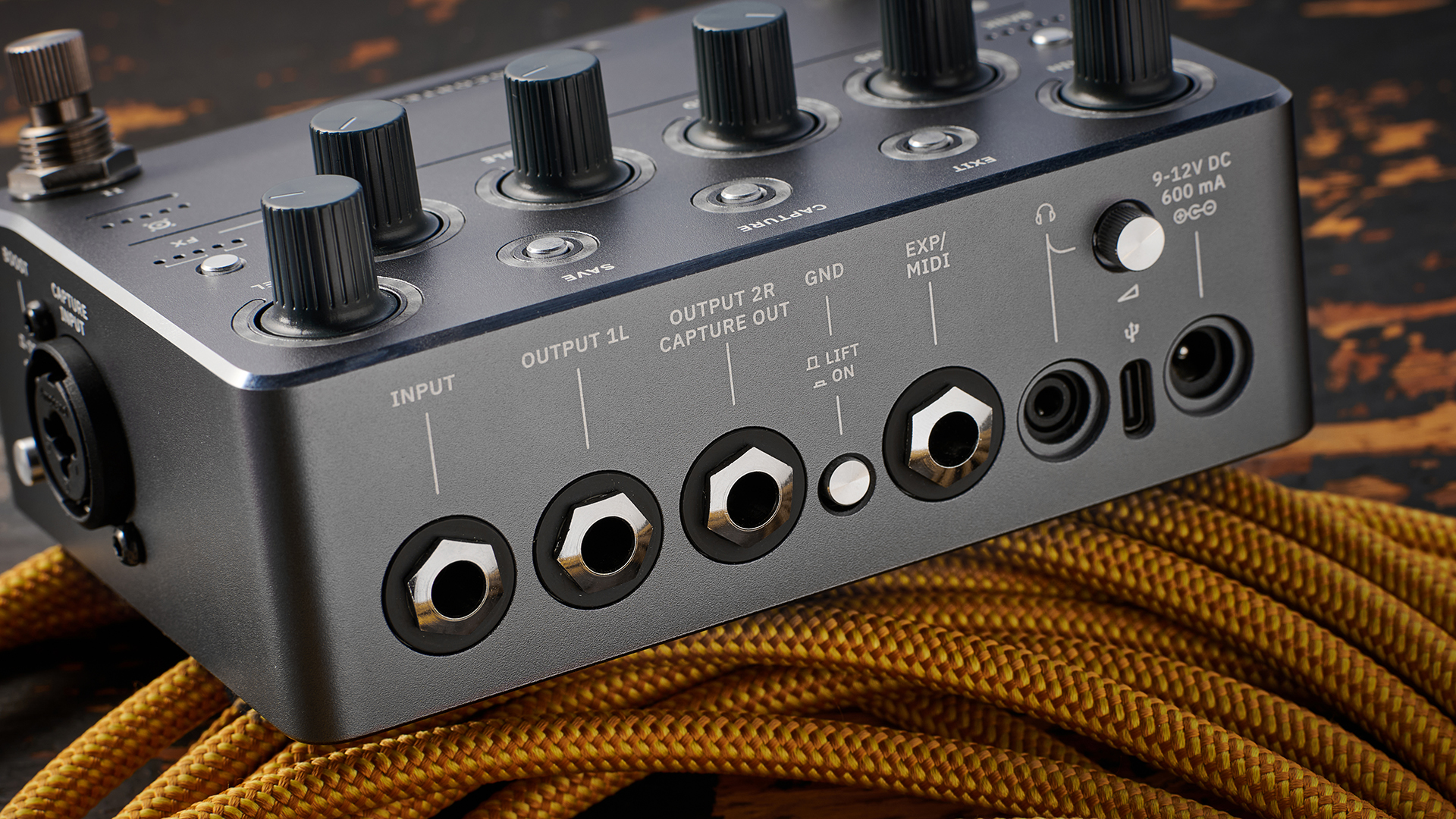
One of the biggest selling points of the Nano Cortex is its Capture function. Like the QC, this can be used to “capture” – read “model” – any drive pedal, amp or cab of your choosing by simply using its integrated Capture input and output to hook up your chosen piece of gear. It can all be done from the pedal itself, which is a huge benefit.
If you know Capture tech, you probably already know it’s one of the best in the business, but for those who are unfamiliar, Neural’s proprietary software is seen as one of the best-performing modeling tools out there. There are countless sound examples on the net of successful Capture experiments, and it does an uncanny job of replicating analog gear.

The fact you can do this with such a tiny stompbox is, of course, impressive, and another demonstration of Neural’s engineering nous. However, the practicality of using Capture in this context is somewhat limited, given that you can’t use overdrive/distortion/fuzz Captures alongside amp Captures.
Remember, the signal chain is fixed, as are the effects slots, so if you want to use a drive you’ve Captured, you’ll run into a bit of trouble – you can't dedicate a footswitch to tap in your favorite drive pedal, for example, unless you had a separate Capture that combined the two. It's not impossible, just a bit of a long-winded workaround.
Neural DSP Nano Cortex review: Verdict
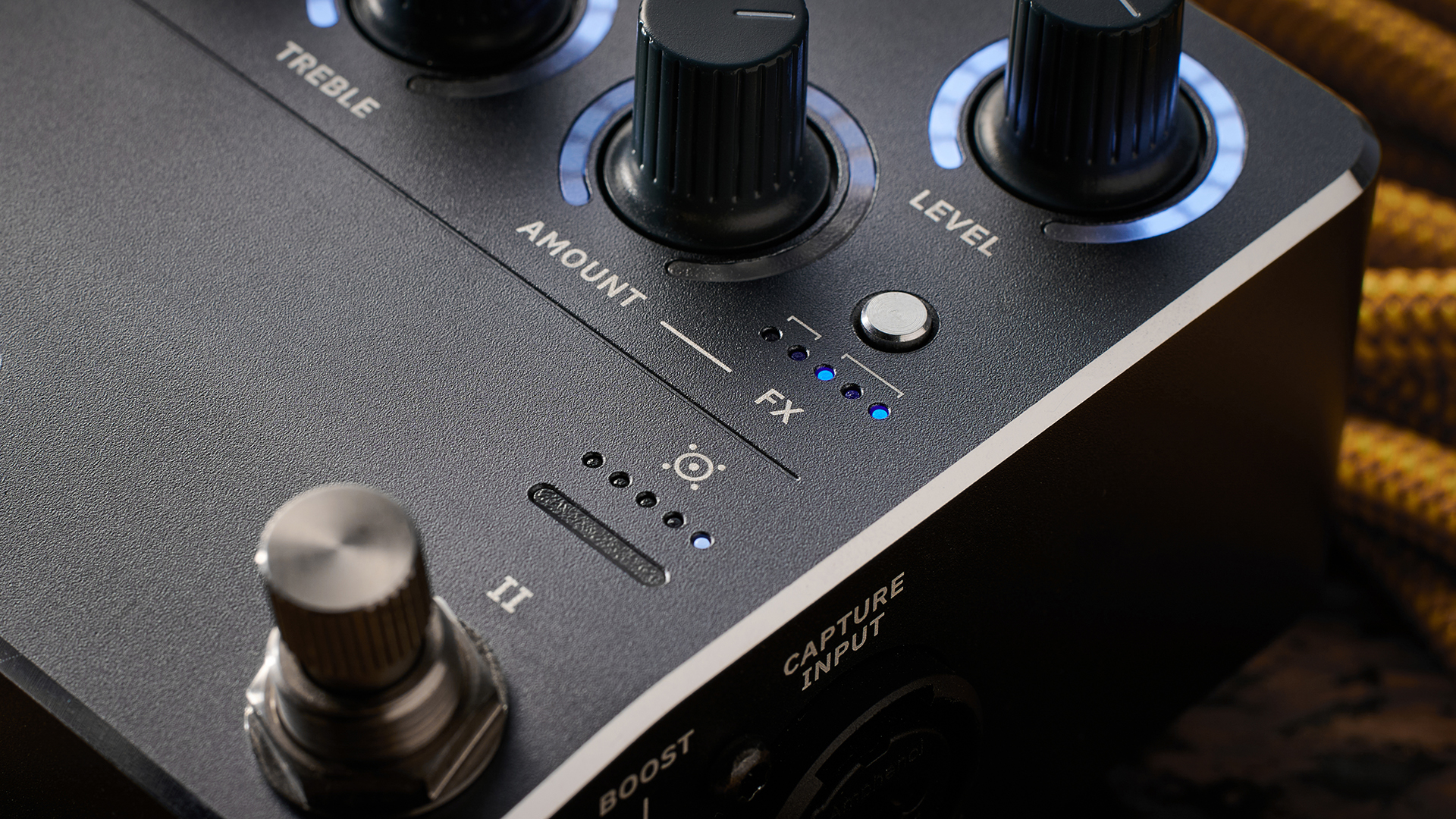
Guitarist’s have been waiting for a follow-up to the Quad Cortex for a long time, and it's inevitable that the Nano Cortex will therefore divide opinion. For some, it might not be enough to fully ‘wow’ them. It is, after all, rather pricey ($549), and is more expensive than the screen-equipped ToneX ($349) – which is also geared towards amp and cab modeling, with some effects thrown in – but, notably, is considerably cheaper than the Kemper Player ($698),
It's also not far off the HX Stomp ($649), which is more intuitive to use, but that seems to be an unfair comparison, seeing as the Stomp simply does more.
The Nano Cortex isn't perfect, but it so nearly is. A display showing what Capture/IR you’re playing through would have been very handy (and some may still ask for tap tempo functionality) but that's a sacrifice that Neural DSP has made in order to make the pedal easier to power – so, it's something of a catch-22.
It has actually convinced this writer to ditch his Blues Junior combo and go completely ampless for live shows
However, interface issues are largely offset by the Cortex Cloud, which is as easy as it gets when it comes to controlling gear wirelessly, and the fact you can Capture an amp directly from the pedal itself is mind-blowing.
The ability to swap out the pre-set effects for others of your choosing is a timely and necessary update that takes this from a very good pedal to a great one. It is shaping up to be the best compact all-in-one rig solution out there, screen or no screen, and what it perhaps lacks in physical function it more than makes up for in tones.
In all, this is very accomplished, very small piece of kit, and for its size it is an exceptional pedal that needs to be heard – and used – to be fully appreciated. In fact, it sounds so good, and is so conveniently sized, it has actually convinced this writer to ditch his Blues Junior combo and go completely ampless for live shows. As someone who has owned an HX Stomp for two years yet been hesitant to take the leap, that’s no mean feat.
And that's where the Nano Cortex will truly find its niche. As was the case with the ToneX, the Nano Cortex is no doubt poised to become one of the more popular amp and cab replacement pedals on the market, and its huge flexibility (all things considered), sonic potential and portability is quite something. The fact it's an ace pedal platform is even better.
There’s a reason Neural DSP is held in such high regard, and that’s because the firm is at the cutting edge of amp modeling – and as a compact amp modeler/cab simulator/Capture device, this is perhaps the best option out there, screen or no screen.
Neural DSP Nano Cortex review: Specs
- 64 preset slots
- 25 Captures organied in 5 banks
- 5 IR slots
- 5 Effects slots
- MIDI / Bluetooth support
- Cortex Cloud compatibility
- Controls: Gain, Bass, Mid, Treble, Amount, Level knobs / Bank, FX buttons / Exit, Capture, Save action buttons / 2 rotary footswitches
- Connectivity: USB-C, Input, Stereo Output, Exp/MIDI, Capture In and Out
- Price: $549
- Contact: Neural DSP

Matt is the GuitarWorld.com News Editor, and has been writing and editing for the site for five years. He has a Masters in the guitar, a degree in history, and has spent the last 19 years playing everything from blues and jazz to indie and pop. During his GW career, he’s interviewed Peter Frampton, Zakk Wylde, Tosin Abasi, Matteo Mancuso and more, and has profiled the CEOs of Guitar Center and Fender.
When he’s not combining his passion for writing and music during his day job, Matt performs with indie rock duo Esme Emerson, and has previously opened for the likes of Ed Sheeran, Keane, Japanese House and Good Neighbours.
You must confirm your public display name before commenting
Please logout and then login again, you will then be prompted to enter your display name.
